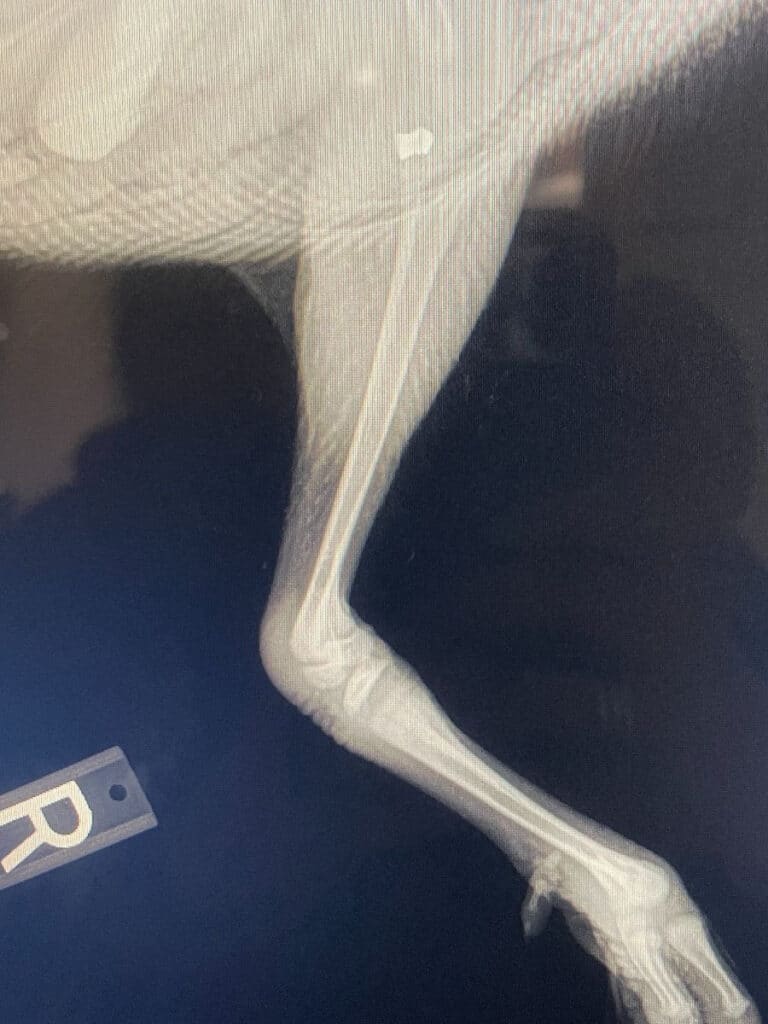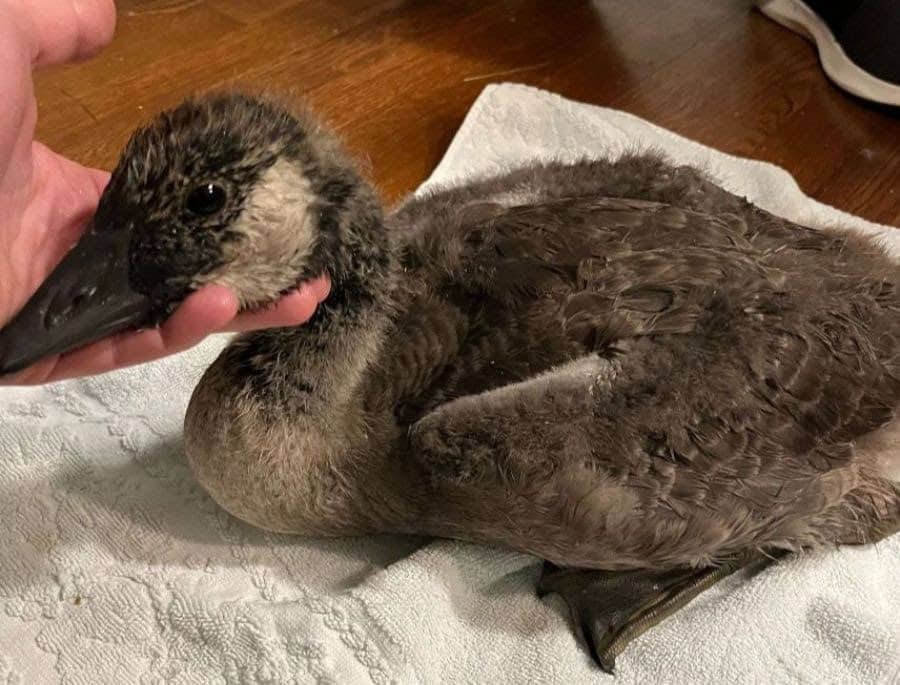Turtles on the Move!
Long Island is home to several species of land and aquatic turtles. This time of year, males travel long distances in search of a mate and females travel to specific locations to create a nest and lay their eggs. In order to reach their destination, turtles may cross busy roads.
If you find a turtle crossing the road:
Put on your hazard lights to alert other drivers to slow down
If cars are stopped and the turtle is moving, allow it to cross the road on its own
If needed, gently pick up the turtle and move it across the road in the direction it was facing
If the turtle is injured, place it inside a cardboard box or other secure container and call our Hotline: 516-674-0982
Patient Spotlight

Baby Goose gets a Second Chance
This baby goose was found struggling to walk and brought to an emergency vet in Commack for treatment. Radiographs taken at the vet revealed that this gosling had been shot with two BB pellets causing a fracture to the femur bone and painful injuries. The gosling was transferred to our Wildlife Rehabilitation Center for care where it spent about 2 months recovering. Once he was fully healed, the gosling joined a pair of other geese in our care- two juveniles whose parents had been hit and killed by a car. Together, the 3 teenage goslings continued their rehabilitation. They would eat grass, lettuces and special pellets. They spent many hours a day enjoying swim time in bathtubs. Once old enough, the 3 goslings were introduced to a large flock of other Canada Geese located at a nature preserve. Without hesitation, the goslings quickly joined their new family.
Canada Geese are a native species of bird in the United States. While there is a legal hunting season for geese, federal law prohibits anyone from intentionally harming these birds in any way such as shooting them with BB pellets. This gosling is one of the lucky birds that was able to get a second chance.




Diamondback Terrapin Release
This Diamondback Terrapin finally returned home to the wild after spending a full year in rehabilitation! In June 2022, this adult female was struck by a boat propeller, resulting in multiple fractures to her shell. Turtle shell repair methods vary based on the size of the turtle and extent of injury. Minor fractures require only medical tape to realign the bones, while severe fractures require brackets and zip ties to pull together and realign bones. No matter the repair method, one thing that is always the same is that turtle bones take a very long time to heal! Unlike our bird or mammal patients that can recover fully in about 2 months, our turtles may require at least twice as long to heal.
This terrapin patient healed from her injuries after about 6 months of care, but we couldn’t release her in the middle of winter. Turtles stay on Long Island throughout the winter but go through a form of hibernation during the cold months. As ectotherms, they rely on their environment to provide heat for their body, so turtles don’t reemerge from hibernation until the weather is sufficiently warm.
Diamondback Terrapins spend most or all of their lives in the same area where they hatched. Once the weather was appropriate, this long-term patient was brought back to her home and finally released back into the wild.

